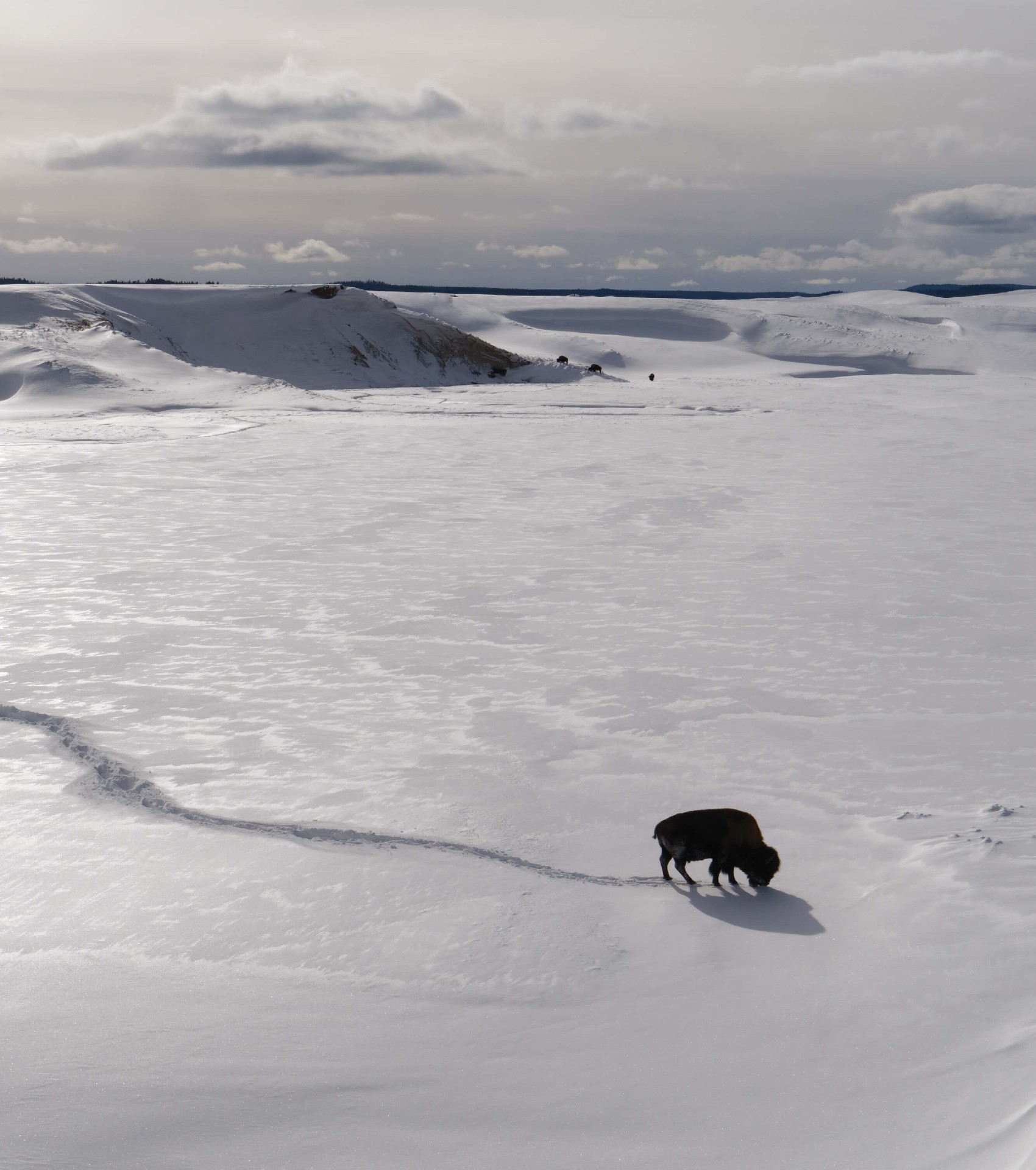
23 Nov Images of the West: Surviving the Snow
Winter in Yellowstone National Park is not for everyone, but for me, that’s also what makes it so special. As a boy growing up in northern Minnesota, I learned to appreciate the benefits of cold and snow: it kept the animals wild, the landscapes pristine, and the crowds to a minimum. And during the frigid, snow-filled months of the year, Yellowstone is much the same, often competing with International Falls, Minnesota for the coldest place in the Lower 48.
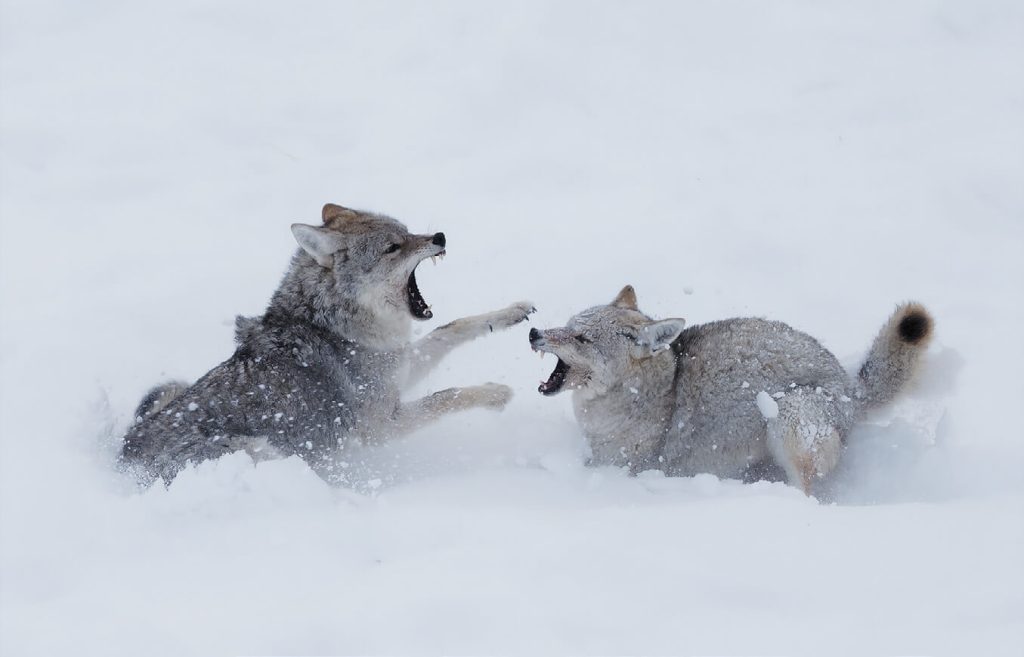
Two adult coyotes fight during spring mating season in Yellowstone.
I’ve visited the park every winter for almost 30 years, however, the pandemic allowed me to spend nearly three months there, self-quarantining in a cabin just outside of the North Entrance. Since I typically don’t have that amount of time to dedicate to any photography project, I pounced on the rare opportunity to immerse myself in the landscapes and wildlife in this place I’ve come to know and love.
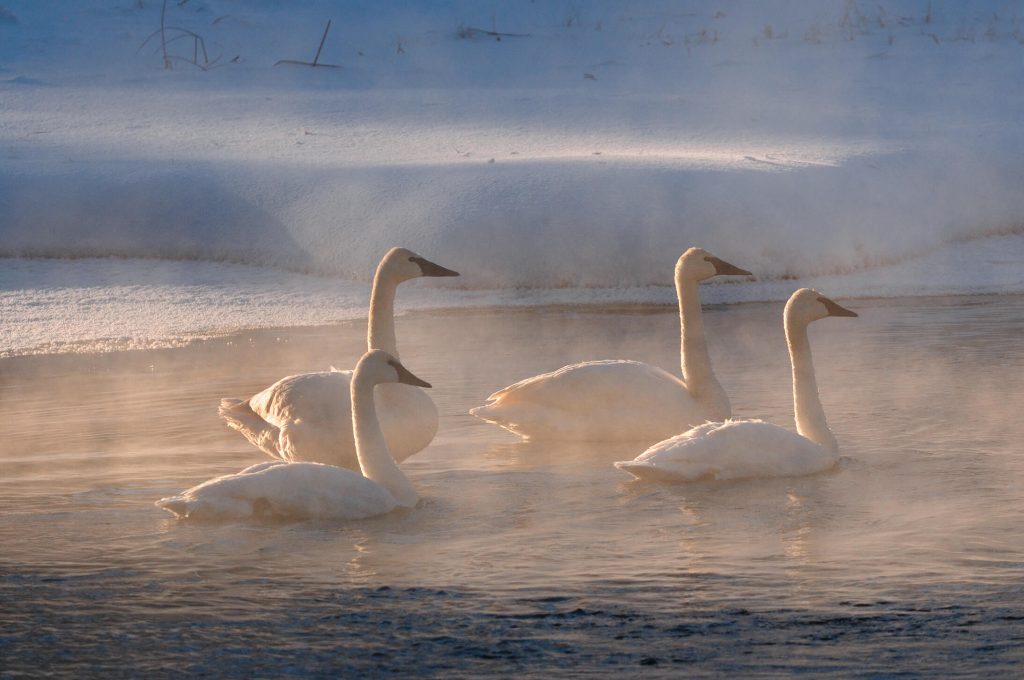
Although it was minus 25-degrees on this winter day in the park, these trumpeter swans still elegantly floated in the Madison River.
No matter the season, the animals in Yellowstone are most active in the early morning and late afternoon hours. Perfect for photographers like myself, these times coincide with the “Golden Hours,” when the low angle of the sun at the edges of the day often projects warm colors, adding an enchanting touch to images. But these are also the coldest times of day, and on many mornings, as I stepped out of my cabin just before sunrise, I was greeted by minus 20-degree temperatures.
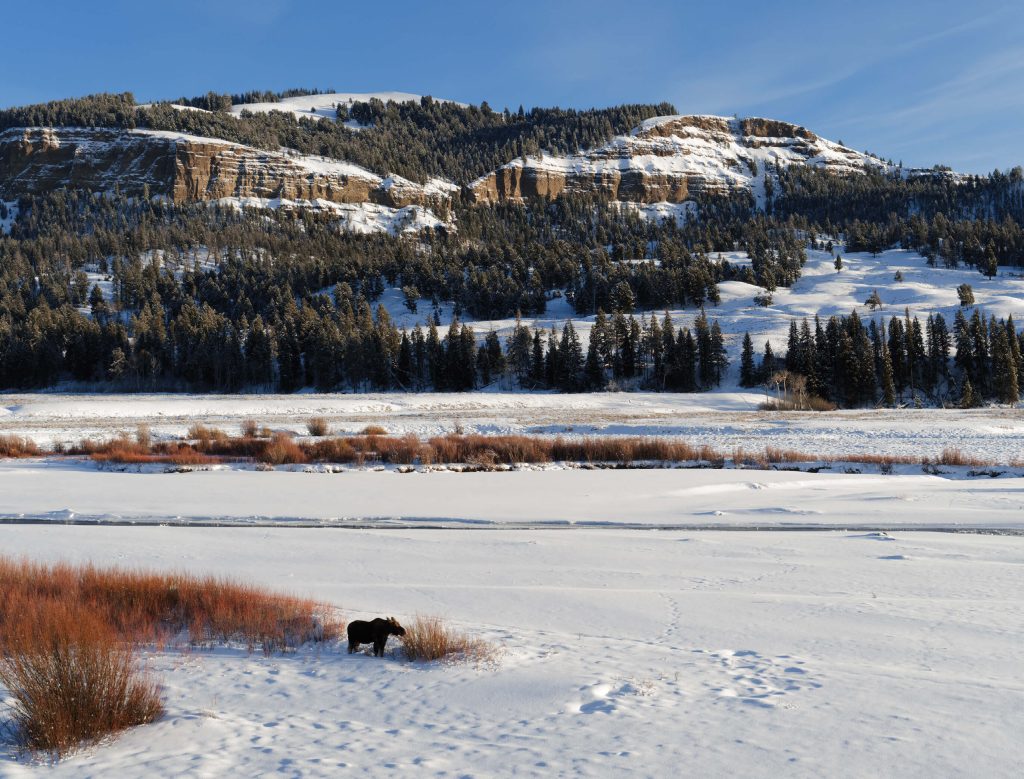
A moose feeds on willows in Yellowstone’s Lamar Valley.
Cold like this requires unique clothing choices — all in the form of layers — starting with synthetic long underwear to wick moisture and topped with a down coat made from Canada goose feathers and heavy winter boots.
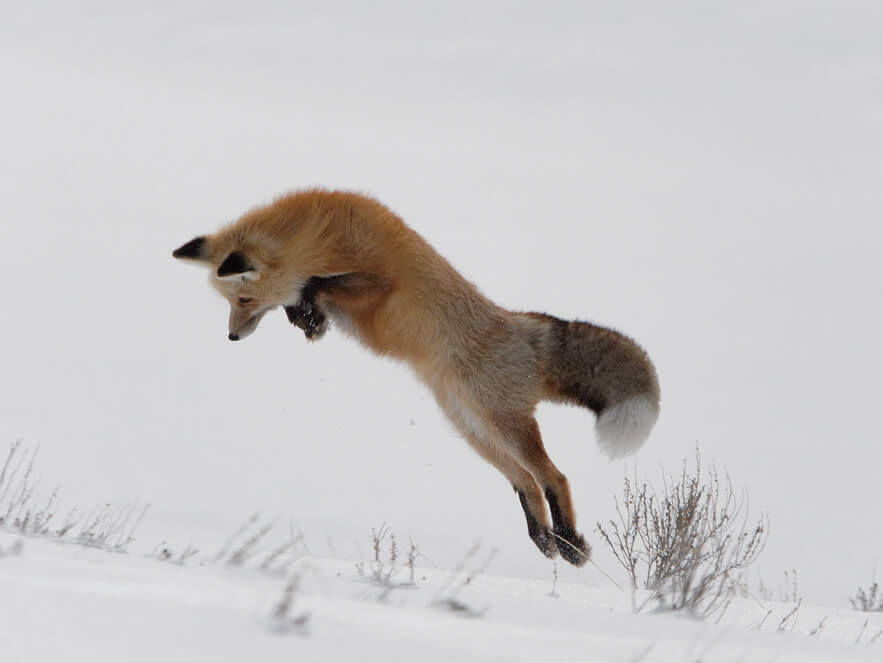
A red fox leaps high into the air, pouncing on a small rodent beneath the snow.
Most of my time was spent in the northern section of the park, where I had the best chance of spotting wolves. It’s also where most of the wolf biologists set up their spotting scopes and make sure that visitors don’t get too close to the animals. Their help in this regard is essential, and concern for your subject is always the most important aspect of ethical wildlife photography.
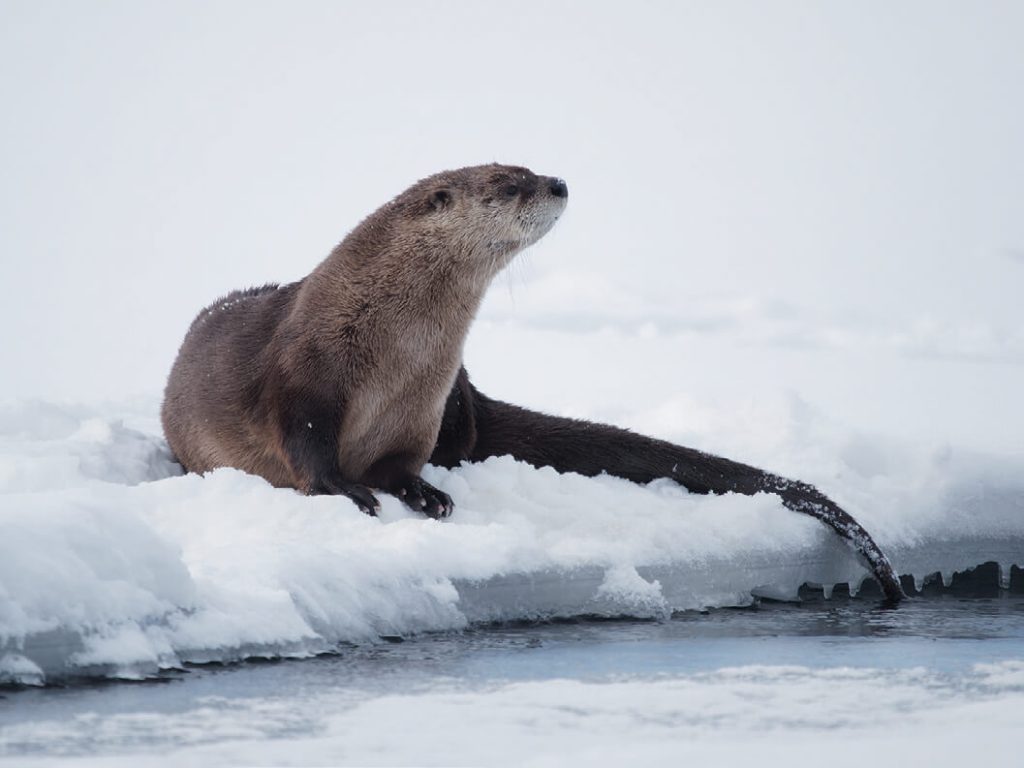
A North American river otter pauses along the icy edge of the Lamar River.
For me, winter in the world’s first national park never gets old. Witnessing how the animals live in these conditions gives me a greater appreciation for my warm and sheltered life. As humans, we have no concept of what it’s like to exist in such a harsh nature setting. I’m hopeful that these images offer readers a closer look, and a way to experience the magnificence without the bite of the bitter cold.
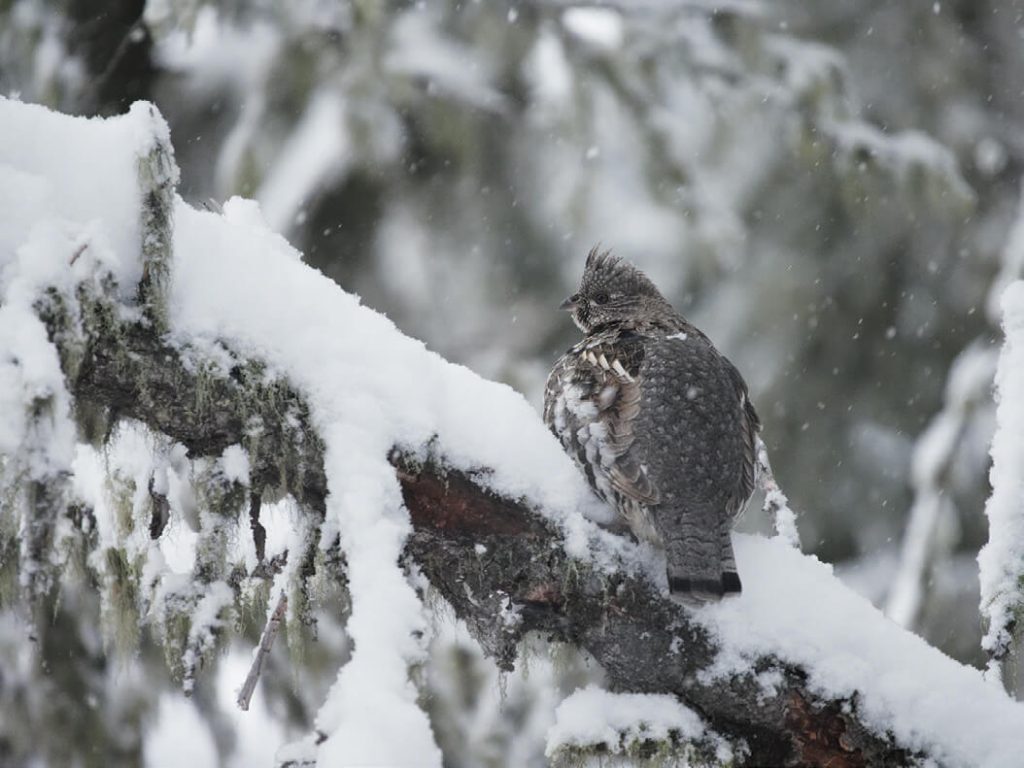
A ruffed grouse sits quietly in a fallen pine tree while light snow falls in Yellowstone National Park.
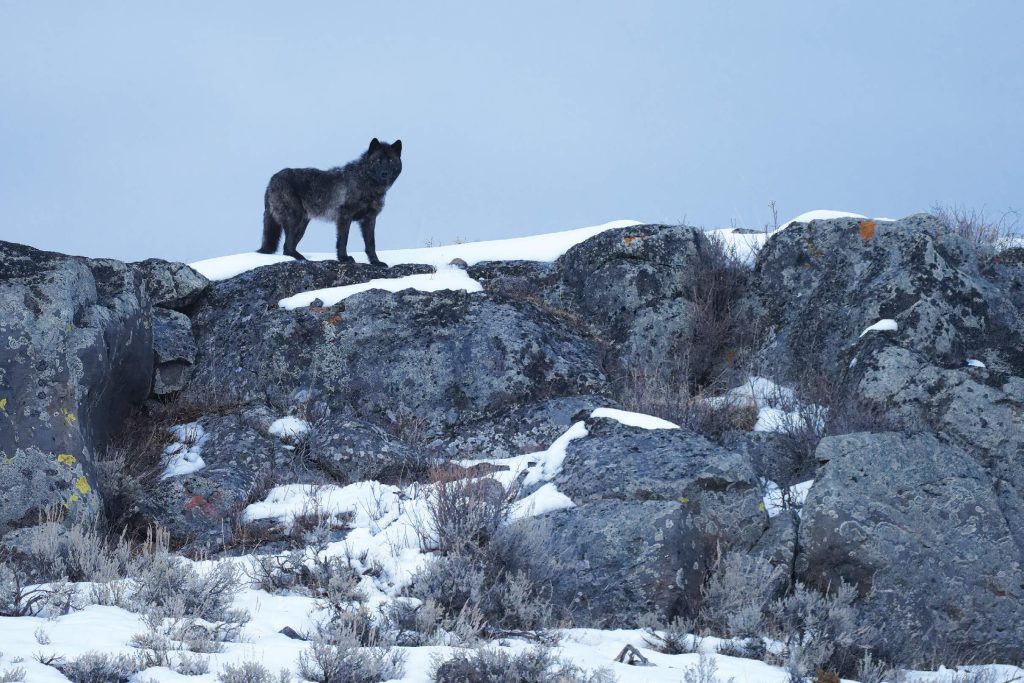
A gray wolf stands lookout on Yellowstone’s Blacktail Plateau.
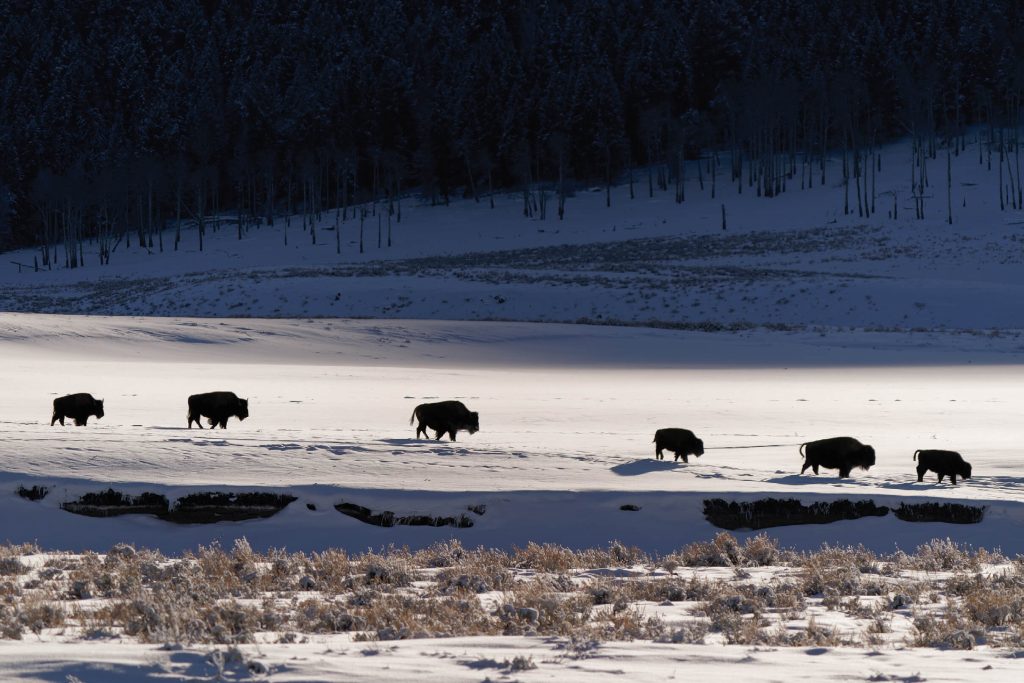
Constantly in search of food, a small herd of bison makes their way across the Lamar Valley.
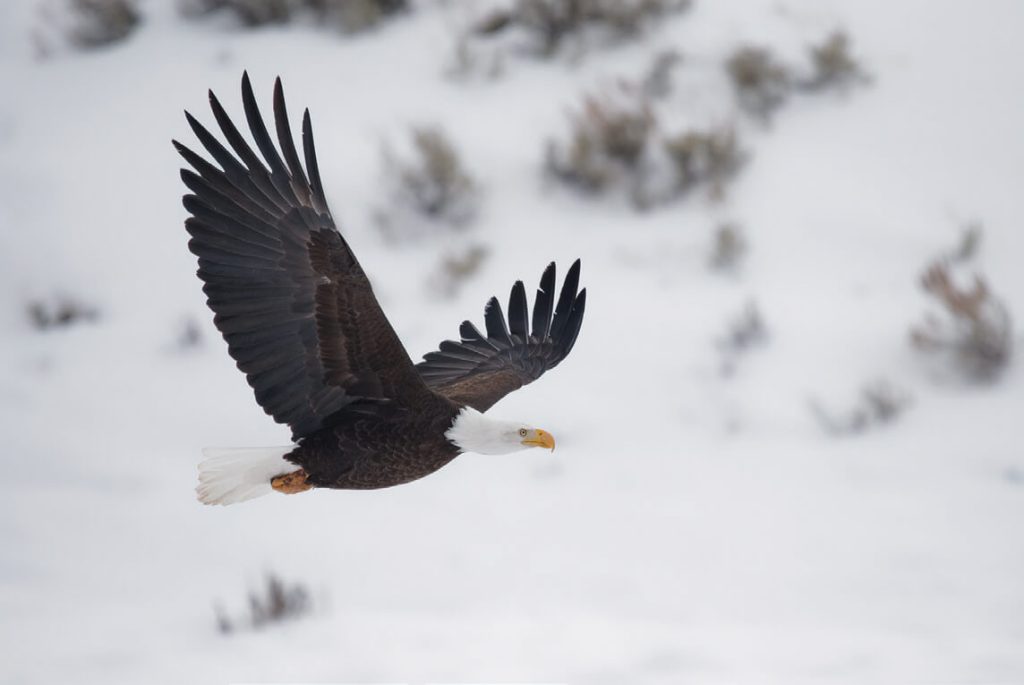
A bald eagle soars over the Lamar River.




No Comments